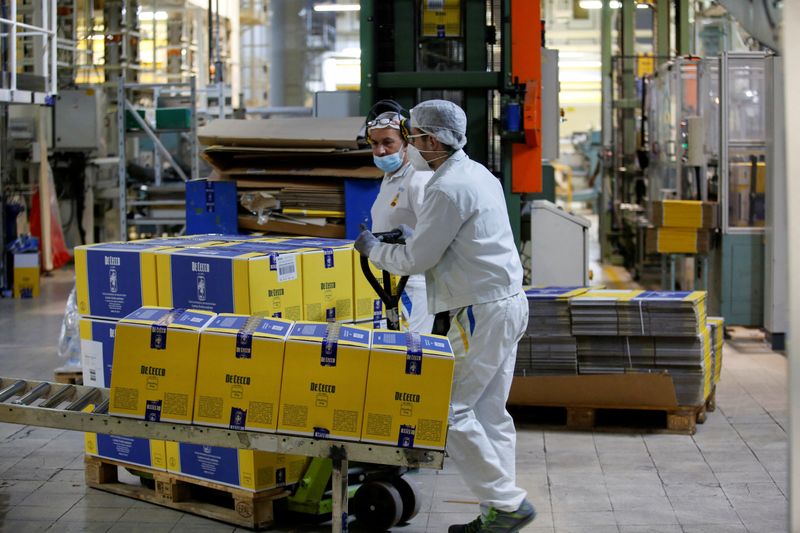Euro zone business activity contracted for second straight month in Aug -flash PMI
2022.08.23 11:14

FILE PHOTO: A worker transports packaged pasta at De Cecco’s factory in Fara San Martino, Italy, November 29, 2021. REUTERS/Remo Casilli
LONDON (Reuters) – Business activity in the euro zone contracted for a second straight month in August as the cost of living crisis forced consumers to cut spending while supply constraints also hurt manufacturers, a survey showed on Tuesday.
S&P Global (NYSE:SPGI)’s flash Composite Purchasing Managers’ Index (PMI), seen as a good guide to overall economic health, fell to 49.2 in August from 49.9 in July, just above the median forecast in a Reuters poll for a bigger drop to 49.0.
A reading below 50 indicates a contraction and August’s preliminary estimate was the lowest since February 2021.
“The latest PMI data for the euro zone point to an economy in contraction during the third quarter of the year,” said Andrew Harker, economics director at S&P Global.
A Reuters poll last month put growth at 0.2% this quarter. [ECILT/EU]
Suggesting there would be no imminent turnaround, demand also fell for a second month. The new business index came in at 47.7, just ahead of July’s 47.6.
A PMI covering the bloc’s dominant services industry fell to 50.2 from 51.2, only just above breakeven and below the 50.5 predicted in the Reuters poll.
Although services firms increased their charges at a slower rate this month the output prices index remained well above the long-term average. It’s reading was 59.9, down from July’s 62.1.
“Cost of living pressures mean that the recovery in the service sector following the lifting of pandemic restrictions has ebbed away, while manufacturing remained mired in contraction in August,” Harker added.
Manufacturing activity fell again this month. The factory PMI dipped to 49.7 from 49.8, its lowest since June 2020, while an index measuring output that feeds into the composite PMI was 46.5 compared to July’s 46.3.
The Reuters poll median forecast was for the headline number to be 49.0.
That downturn in activity came despite factories completing old orders and building a surplus of completed products at the fastest rate since the survey began in mid-1997 as they struggled to sell in a falling demand environment.
The stocks of finished goods index climbed to 53.3 from 52.5.







